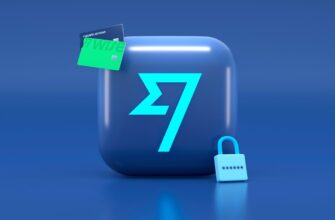## Introduction: Why Anonymous Private Key Backup Matters
Your private key is the ultimate key to your cryptocurrency holdings. Lose it, and your funds vanish forever. Store it carelessly, and you risk theft. For beginners, backing up this critical piece of data anonymously adds a crucial layer of privacy, shielding you from targeted attacks and digital surveillance. This guide demystifies secure, anonymous backup methods using simple techniques anyone can implement—no technical expertise required.
## Understanding Private Keys & Anonymity Basics
A private key is a unique cryptographic code (e.g., `E9873D79C6D87DC0FB6A5778633389F4`) that proves ownership of crypto assets. Unlike passwords, it can’t be reset.
**Anonymous backup means:**
– No link to your identity (avoid cloud accounts tied to your name/email)
– No digital footprints (avoid online storage)
– Physical or offline storage only
– Zero third-party access risk
## Top 5 Anonymous Backup Methods for Beginners
Choose one of these beginner-friendly approaches:
1. **Encrypted Paper Wallets**
Print your key on paper, then store it in a tamper-evident bag inside a locked safe. Use a passphrase for added encryption.
2. **Metal Backup Plates**
Engrave keys onto stainless steel plates (e.g., Cryptosteel). Fireproof and waterproof. Store in a hidden location.
3. **Offline Digital Storage**
Save keys on a **brand-new** USB drive encrypted with VeraCrypt. Never connect it to internet-enabled devices.
4. **Shamir’s Secret Sharing (SSS)**
Split your key into 3-5 parts using free tools like SLIP39. Distribute fragments to trusted contacts/locations.
5. **Memorization + Physical Hint**
Memorize a custom passphrase, then store a *non-obvious reminder* (e.g., a book title) on paper. Not for complex keys.
## Step-by-Step: Anonymous Paper Backup Walkthrough
Follow this secure process:
1. Generate keys offline using an air-gapped device
2. Encrypt key with a strong passphrase (12+ random words)
3. Print two copies on blank paper
4. Place each in a sealed UV-resistant bag
5. Store copies in separate geographic locations (e.g., home safe + bank vault)
6. **Never** photograph or scan documents
## Critical Mistakes to Avoid
– ☠️ **Cloud storage:** Google Drive/Dropbox can be hacked
– ☠️ **Screenshots:** Phone backups sync to identifiable accounts
– ☠️ **Unencrypted USBs:** Physical theft exposes keys
– ☠️ **Sharing fragments improperly:** SSS parts need geographic separation
– ☠️ **Poor hiding spots:** Avoid obvious locations like drawers
## FAQ: Anonymous Private Key Backups
### Why is anonymity important for private keys?
Anonymity prevents hackers from linking backups to your identity during data breaches. It also protects against physical theft targeting known crypto holders.
### Can password managers store private keys safely?
Only offline managers like KeePassXC (on air-gapped devices). Cloud-based managers (LastPass, 1Password) create identity-linked vulnerabilities.
### How many backup copies should I make?
Minimum two, stored in separate physical locations. Three is ideal for SSS fragments. Never store all copies together.
### Is engraving metal better than paper?
Yes—metal survives fires/floods. Paper backups need fireproof containers. Both require equal anonymity precautions.
### What if I forget my encryption passphrase?
Your funds are permanently lost. Store passphrase hints separately from backups using the SSS method. Never write the full phrase.
## Final Security Checklist
Before finalizing your anonymous backup:
✓ Test recovery process with trivial funds
✓ Verify storage locations are discreet and secure
✓ Ensure no digital traces exist (clear printer/cache history)
✓ Update backups only from clean offline environments
Your private key is your crypto’s lifeline. By prioritizing anonymity in backups, you eliminate single points of failure while maintaining total ownership—exactly what decentralized finance was meant to be.








